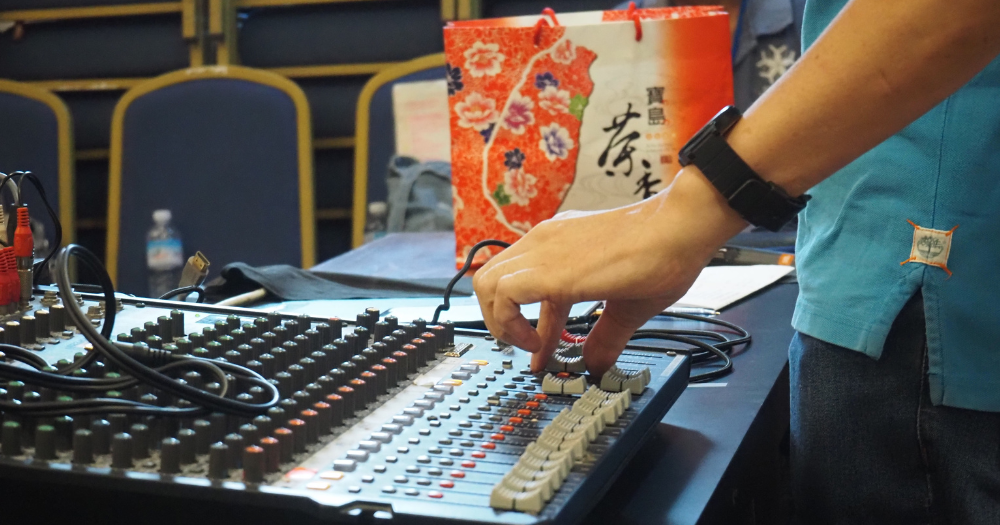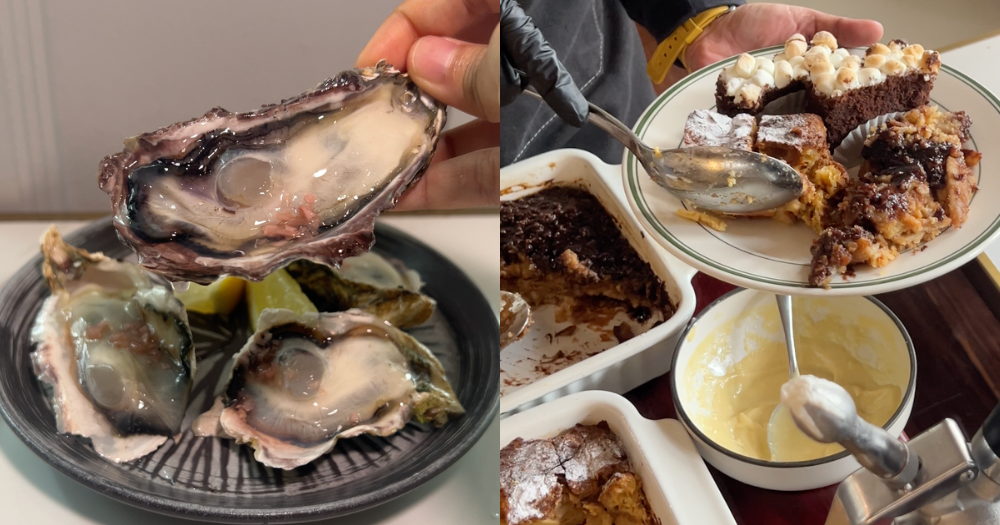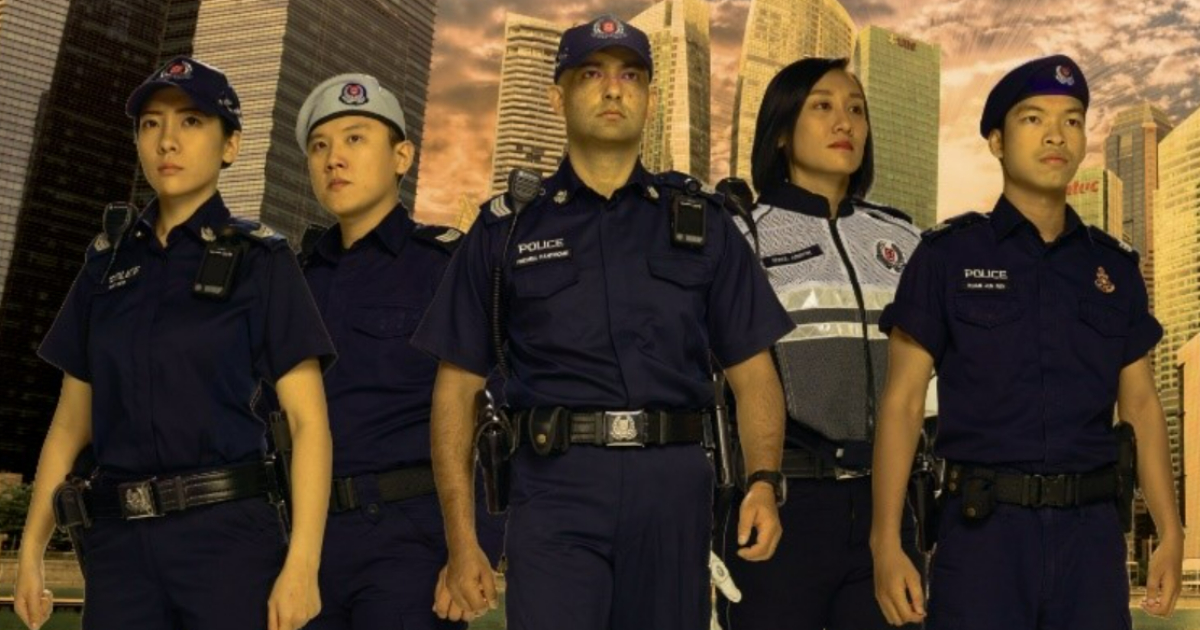Firsthand: S’pore’s line dance community may be growing older, but they’re young at heart
Faraway from its roots in the U.S., line dancing has found a home in Singapore.

It was a rainy day on May 1, 2002, when a group of Singaporeans set out to beat a Guinness World Record.
15,000 people and a sea of cowboy hats flooded the Singapore Expo Centre.
There were school students, sports teams, aunties and uncles, and everything in between. And when the DJ hit play on “Rasa Sayang", 11,967 of them started dancing — or boot scootin’, to use the lingo.
 Dancing the "Singapore Swing" to break the world record. Image via Bill Bader.
Dancing the "Singapore Swing" to break the world record. Image via Bill Bader.
That day, Singapore broke the Guinness World Record for the world’s largest country line dance. They raised S$3,000 for the Singapore Heart Foundation and made headlines. "Singaporeans Break Line Dance World Record," The Straits Times boasted from its front page.
These days, numbers are dwindling, the average age is ever-increasing, and China has held the world record since late-2015.
But the line dance community, if a little smaller and quieter, is still full of life.
And there are plenty of people who aren't quite ready to give up on it yet.
Singapore Cowboy
Line dancing — an Americanisation of a European-style dance deeply rooted in country music, with lyrics often centring on pick-up trucks, alcohol, gambling, and Christianity — may seem out of place here in Singapore.
But not for the Country Line Dance Association Singapore (CLDAS).
They meet at least once a week and have done so since 2000, when a group of 25 pioneers first met on the dance floor.
On the invitation of the association's founding president Michael Pang, I arrive at the Eurasian Association in Katong for the association's weekly dance jam.
 President Pang. Image by Emily Williams.
President Pang. Image by Emily Williams.
I’m not quite sure what to expect. My hesitation is unfounded, however; secretary Judy Lee embraces me in a warm hug and offers me a bottle of water, and Pang leads me over to the makeshift DJ booth, where the resident DJ, Yeo Kok Pang, is stationed. He's armed with a 64-song dance list and a sound board.
It's a big deal, apparently; Pang tells me the list needs to be curated to suit everyone's taste. If the list isn't up to scratch, neither is attendance.
 Image by Emily Williams.
Image by Emily Williams.
The association was born in the 90s, when pubs and clubs played country music alongside MC Hammer and Bon Jovi — at the time, the height of cool.
It started out with a small group of people who approached Pang. They wanted to create a home for country line dancing in Singapore. So he did, and 1,800 others promptly jumped on board.
These days, there are approximately 400 members, many of whom have been around since the beginning. The group meets every Sunday at 4pm to dance to classic country tunes.
This week, I’m in a quaint multi-purpose hall with high ceilings and a wooden stage at one end. There are around 60 people in the hall; some are dressed simply in t-shirts or activewear, others more on-theme in cowboy hats, leather boots, and — my personal favourite — a “Live, Love, Line Dance” shirt.
Later, Pang tells me the average age sits in the late-60s, and most are retired professionals. I'm the youngest in the room by a long shot.
DJ Yeo picks up the microphone to announce the first dance, "Country Walkin". The first strum of the ukelele signals the departure from Katong to the faraway lands of the U-S-of-A.
As he moves down the song list, I see two women drop out of the dance to sway together to the music, arm-in-arm. I see dancers talking through the steps to others, helping them along. I see one woman with a print out of all of the step-sheets, which she diligently follows. I see people laughing, singing along, and just genuinely appearing to be having a great time.
 Image by Emily Williams.
Image by Emily Williams.
It's incredibly wholesome. I ask Pang what he thinks is the appeal of the genre; he likens it to eating food:
"It's something like: you like hot and spicy food, I like less spicy. So it's individual, I think it's individual."
Although membership of the association may have dwindled over the past 24 years, the group's love of the "less spicy" has not.
I’m a better line dancer than PM Lee
In 2013, Senior Minister Lee Hsien Loong was on an evening walk at Marina Bay with his wife, Ho Ching, when the pair stumbled across the group dancing.
Pang was there, and tells me it was a highlight of his 24 years with the group.
“The [former] PM was something we never expected,” says the founding president.
“He saw this group and came, approached and asked, ‘Ooh, what you guys doing?’
I say, ‘we are line dancing’.
‘Oh, very interesting, can I join in?’
‘You serious?’
‘Yes, I’m serious.’
‘Okay, let’s give you a 10-minute lesson.’
And we pulled him aside, taught him 18 steps — that’s all, and he joined in the dance.
That was lovely.”
The choreography was to Alan Jackson’s “Living on Love”, a dance they’ve since re-named the “Minister’s Dance” in honour of Lee.
Pang insists I stick around until track number 48 so I, too, can do the “Minister’s Dance”.
 CLDAS teaching Senior Minister Lee and his wife a thing or two about line dance. Image via Lee Hsien Loong/Facebook.
CLDAS teaching Senior Minister Lee and his wife a thing or two about line dance. Image via Lee Hsien Loong/Facebook.
Unlike the former PM, I don’t get the 10-minute lesson. Instead, Pang sandwiches me between two regulars, telling me to follow their lead.
On my right is Elsa Lim, donning a newsboy hat and black cowgirl boots.
She has not missed a single song all afternoon. Other than for water, a quick glance at the dance list, or a flutter of her portable fan, she has remained on the dance floor. She’s good, too. Really good.
On my other side is Selina Lee. We sat together earlier in the afternoon, talking about her time in CLDAS. A founding member, she says the community and the friendships gained over the last 24 years are invaluable.
As I clumsily fumble my way through the supposedly simple steps, flanked by the pair, I learn there’s a great deal of concentration involved in line dancing — something I evidently lack.
 Image by Emily Williams
Image by Emily Williams
During the 3 minute and 48 second song, if I’m not looking down at my awkward feet, I find myself marvelling at the group around me.
Most are more than double my age but despite varying mobility levels, are far quicker, coordinated, and graceful than I.
One thing we all have in common is the big cheesy grin planted on our faces as we giggle our way through the song. It really is fun.
Pang films me doing the Minister’s Dance. Re-watching it is like watching a newborn giraffe awkwardly stumble through its first few steps of life.
But he tells me I’m a better line dancer than former PM Lee. I message my mum and tell her. "Of course you were," she replies.
A passion project
Since 2000, Pang has served as CLDAS's president without getting paid, investing countless hours (and dollars), driven by passion and a genuine love of line dancing and country music.
But approaching the 25th year in the hot seat, he's getting weary and is preparing to hang up his cowboy hat.
 Michael Pang worked in medical supplies before he retired. Image by Emily Williams.
Michael Pang worked in medical supplies before he retired. Image by Emily Williams.
He describes it as a "passion project". "It's not about the numbers," he explains.
"I can have thousands [of members], but what I want is quality — people with the same passion.
We love country music and we are here, we are happy, and this one is for the rest of our life.
You know how many here are widowers? A lot of them. Before this, they were always at home watching TV."
He tells me the association offers an antidote to loneliness — something he says "will kill you" — emphasising the benefits of social interaction and fellowship, especially in relation to one's mood.
Studies have also proven that line dancing, as a physical activity, can reduce the risk of dementia by 76 per cent. It's something many of the dancers I speak to highlight, too.
 Pang's digital CLDAS membership card. Image by Emily Williams
Pang's digital CLDAS membership card. Image by Emily Williams
Pang has kept the association afloat for 24 years. But whenever it is he chooses to depart, I know everything will be in good order for his successor.
He's dedicated so much of his life to building CLDAS, his fingerprints will remain all over the place.
Besides — I have a feeling that even when Pang steps down, you'll still catch him at every jam. His successor suggests the same thing to me.
The rebel
Philip Sobrielo is, in some ways, a polar opposite to his predecessor.
At 43, he's much younger than most of the other line dancers I encountered. But he's competed, trained, taught, and performed across the globe; a natural choice for the next president of CLDAS.
Sobrielo has been at it since he was five years old. His mum was one of the first line dancers on the island, inspired by her U.S.-based aunt.
Now he's a full-time line dance instructor running his own school, teaching more than 100 students across eight classes each week.
 Philip Sobrielo. Image by Emily Williams.
Philip Sobrielo. Image by Emily Williams.
When I first learn of Sobrielo from Pang, I'm told he runs "the younger group". But it's not really true, many of his dancers (excluding a lone 27-year-old) are of the same demographic as CLDAS's members.
The real difference lies in Sobrielo's approach; it's more contemporary, more demanding. He tells me he has always been considered "the rebel".
For one, unlike them, he's averse to country music, preferring the likes of Britney Spears and N'SYNC. I learn there's such thing as hip hop line dancing, jazz line dancing, salsa line dancing, and ballet line dancing.
Having spent plenty of time competing overseas, he's a proud member of the international line dancing community. He was even a "Crystal Boot Award" nominee in the UK — which, he explains, is the "Oscars of line dancing".
Initially, I find myself struck by how different his experience of line dance is compared with that of Pang — there's a shine to it, almost a glamour, that's a far cry from bandanas and boots in a Katong multi-purpose hall.
But on reflection, it's not that different at all.
Both are pioneers within Singapore who place a huge emphasis on community and the relationships which have stemmed from line dance.
It's only that Sobrielo, although very active within Singapore, has done much of his networking overseas — he travels at least once a year. Whereas Pang and CLDAS's relationship-building has been firmly rooted in Singapore.
Perhaps the main difference between the two is that line dancing is a hobby for Pang, but it's a career for Sobrielo.
 Sobrielo in action. Image by Emily Williams.
Sobrielo in action. Image by Emily Williams.
However experienced and well-travelled Sobrielo may be, he's still nervous about taking over:
"I might take over and then destroy it, who knows?" he muses.
"[But] if I come in, I'm not going to change things. I'm going to enhance it."
Since December, once a month, Sobrielo's students and members of CLDAS meet for a combined dance jam. Pang calls it a "rejuvenation program", designed to ensure continuity of the group and safeguard a smooth transition between presidents.
It has taken the last six months of collaboration for everyone to realise they all want the same thing: to line dance.
The tough question
When I ask Sobrielo what the future of line dance in Singapore is looking like, he replies:
“That's a tough question, eh," he says, taking a cautious pause.
“I'm gonna say that it's not looking good, and I tell you why,” he says.
The 43-year-old believes the biggest threat to the continuation of line dancing is stigma.
 A dance jam hosted by Sobrielo. Image by Emily Williams.
A dance jam hosted by Sobrielo. Image by Emily Williams.
He says the idea of line dancing being for aunties and uncles — because they’re the people we routinely and almost exclusively see on void decks or in parks — acts as a deterrent for young generations taking it up.
“All the music that they choose, or the way they dance… how is that going to change the mindset of a younger generation when they walk out there? They see what they see, and they get put off.”
But, given the recent surge in line dance videos appearing on my For You Page on TikTok, perhaps change is in the air.
Increasingly, as pop stars pivot to country music and make it their own, TikTok has been flooded with young people boot-scootin' their hearts out.
@itsgroovetime Wonder how many new fans country music got this week! This fun dance by @Dexter Mayfield and @Matt McCall to @Beyoncé newest single Texas Hold ‘Em has not slowed down one bit. With more than 200k post using the sound, it’s pretty clear this ones going viral 🔥🔥 #texasholdem #dancechallenge2024 #beyoncechallenge #dance #compilations #viraldance #linedance #country ♬ TEXAS HOLD 'EM - Beyoncé
There are 250 million results when I search Beyonce's "Texas Hold Em", one of the songs responsible for the resurgence. The majority of them are takes on a now-viral dance routine, with steps that bear more than a passing resemblance to line dance — heel-tapping, hip-swaying, and a good old-fashioned lasso.
As one Texas Monthly article suggested, TikTok has made line dancing cool again:
"Line dancing looks less like a Western relic and more like a natural extension of the arm-swinging, hip-rolling dances that have captivated TikTok for years."
And if this is the way young line dancers are recruited, I say, "so be it".
The future doesn’t have to be grim
At the entrance of Kinex Mall in Katong, around 50 people are gathered for Sobrielo's dance jam.
Unlike the first dance jam I visited, this one is in public. The music, also, is different; instead of country, here there is Dua Lipa and Beyonce.
I spy Elsa Lim in the group, my former instructor. Although this time, the steps appear quicker and more complicated, she appears comfortable and looks as graceful as I remember.
 Elsa Lim. Image by Emily Williams.
Elsa Lim. Image by Emily Williams.
It's a whole different set-up. But everyone I speak to — just like before — emphasises that line dancing is so much more than just dancing.
It’s a social outlet and helps prevent dementia. It’s exercise and a mood-booster. It’s a memory test and a chance to enjoy music. But mostly, it’s community and family.
Olwen — a dancer at the jam, who has been line dancing since 2000 — puts it best.
“I’m an introvert. Without line dancing, I would have zero friends,” she says.
One spectator catches my eye, a toddler around three years old. She commands a spot in front of the group, her parents standing a few steps behind her. She twists and twirls and bops and claps and cheers along to the music, giggling.
It reminds me of something Sobrielo had told me in his living room the week prior, about why he loves line dancing:
"I can teach a five-year-old-and I could teach a 70-year-old the same dance and they both can be on the dance floor at the same time and people be like, 'Wow.'"
 Image by Emily Williams.
Image by Emily Williams.
Watching, I feel optimistic about the future of line dancing. It can transcend age, music genre, and athletic ability; there's something for everyone.
I can't help thinking what a shame it'd be if Singapore lost its lovers of the "less spicy"; if it fades with this generation of community centres and country clubs, and becomes something that lives on only in active ageing programmes.
I don't know if a few viral TikTok dances will be enough to keep it alive. But I hope it does.
Plus, from my little taster — line dancing is just damn fun.
Top image by Emily Williams

MORE STORIES




















